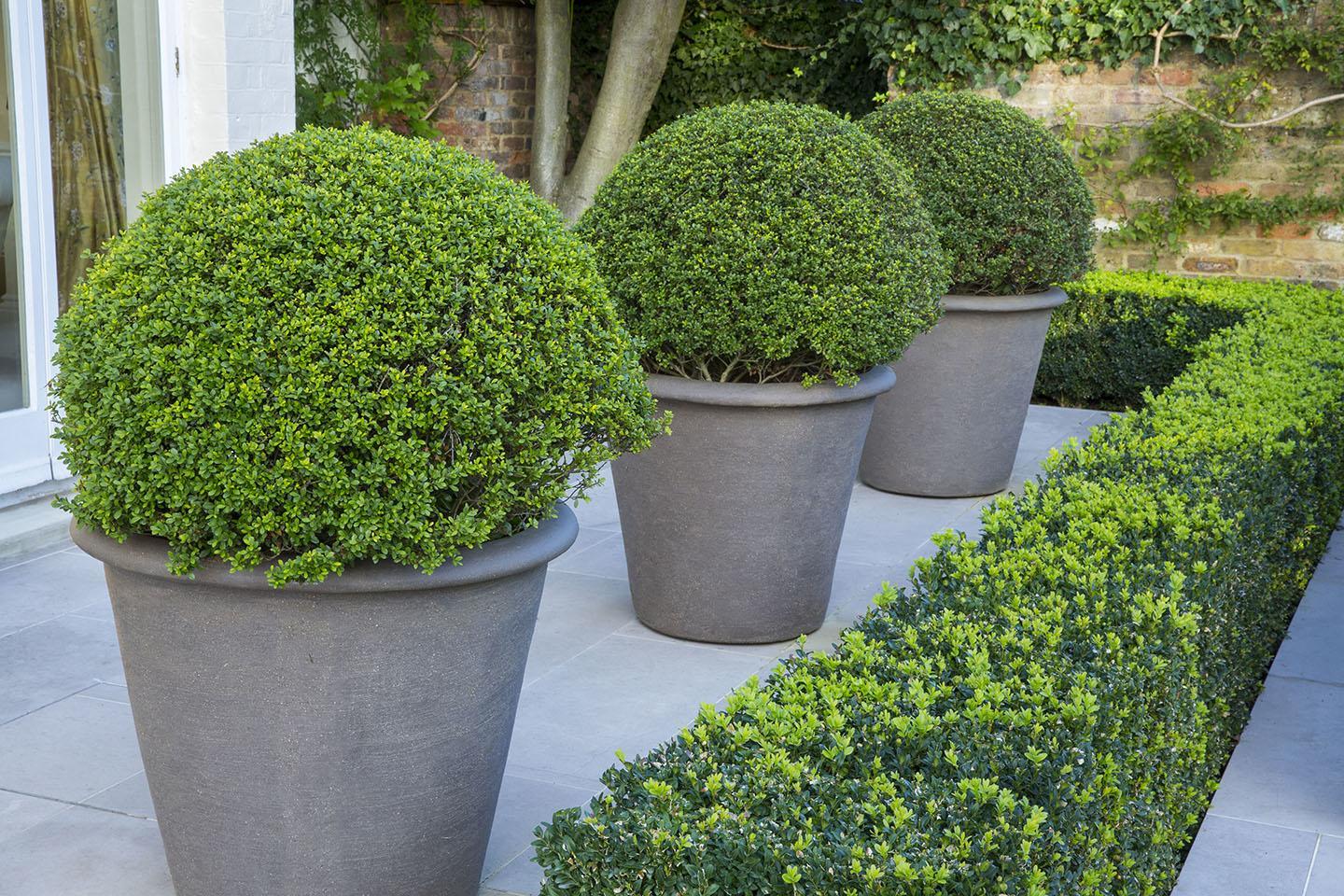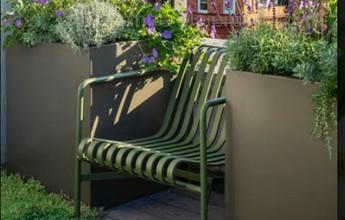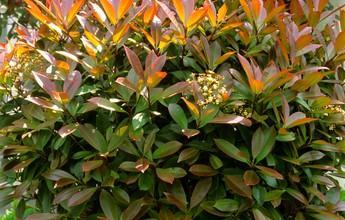
Sometimes it’s worth spending serious money on your outside space. Not just on great-looking containers and fabulous furniture, but on a different kind of forever purchase: big-as-you-like specimen plants. Think of it as investment dressing. Because a mature shrub in a tub will have more impact on your balcony or patio than a barrowful of bedding, and with a little care on your part, will last a whole lot longer – many years, in fact. The key is to buy big, and buy evergreen, so there is plenty of leafy green action all year round. Another plus to spending on mature plants is that the larger the plant, the hardier it is likely to be. Given the increasing demand for instant gardens, there are plenty of choices from both specialist nurseries as well as many garden and DIY centres.
An obvious choice is a ready-carved piece of topiary which, at a decent size, can be as striking as a piece of contemporary sculpture. Bay, yew and box are the regulation choices for pyramids and spirals, spheres and cubes, but given the potential problems of both box blight and caterpillar, nurseries are focusing on growing the similar, but safer, and equally clippable Ilex crenata, the box-leaved holly.
One of the finest evergreen shrubs is also one of the most familiar: Viburnum tinus, the most underestimated of all the viburnums. Unfussy about soil or location, Viburnum t has neat dark green foliage and produces clusters of creamy-pink flowers for months through winter, spring and sometimes even beyond. A small size can be overlooked, but a large size has real substance. Two of these on either side of the front door, big and billowing and frequently in flower, would make a great statement.
Glossy-leaved Choisya ternata, the Mexican orange blossom, is another garden centre staple that has the prettiest starry white, citrus-scented flowers in late spring, provided it is given a site in sun or part shade. Choisya Aztec Pearl has a similar flowering habit but offers more interesting, finely divided foliage that has a Japanese feel and would beautifully suit an Oriental-style container. Both can easily be clipped to keep them in a pleasing shape.
If you’re more drawn to the Med, however, and you can offer a sunny spot, consider a Portuguese laurel, which is usually bought en masse as a hedging plant, but makes a great little tree when bought as a standard, its bare trunk topped with foliage shaped into a globe or even a parasol. With elegant, narrow leaves on deep plum stems, this Portuguese variety – aka Prunus lusitanica – is one of the toughest, hardiest laurels despite its provenance. Nothing suits it better than a classic terracotta pot.


From the same neck of the woods comes a more novel choice: Arbutus unedo, the strawberry tree, so called because of the bunches of pretty strawberry-like fruits that accompany small bell-shaped white flowers, rather like lily-of-the-valley, in autumn. The bark is a rich copper-brown and the leaves are a vibrant green, with tinges of red on the new foliage. As a tree, it can eventually reach 8 metres, but can stay comfortably smaller in a container either as a shrub or a standard.
Photinias are probably the number one front garden evergreen, but no less desirable because of their popularity. Small size, they’re pretty insignificant, but grown as a large shrub or standard tree, they come into their own, especially in spring, when the new russet-red foliage emerges. Aptly-named Red Robin is popular, but son of Red Robin, Pink Marble, is a real showcase, with variegated cream and green leaves that start out a rich pink. To keep the fresh young foliage coming, cut back the stems about 15cms to just above an outward-facing bud in spring.
For a touch of the tropics – and to establish an architectural vibe – a large New Zealand flax, with its colourful sword-like leaves, often striped in shades varying from cream and olive to terracotta and black, springing from the base of the plant – is unbeatable. A pair of these on a balcony, in one of the many stunning shades that range from uncompromising Platt’s Black to Yellow Wave, Pink Stripe, and Crimson Devil, would look terrific. Varieties Maori Queen and Court Jester are practically rainbow-striped.
All of these statement shrubs will thrive in large tubs given an annual spring feed of fertiliser as well as, of course, regular watering. Topping the compost with either seasonal bedding or pebbles will help keep in moisture and add a decorative flourish.